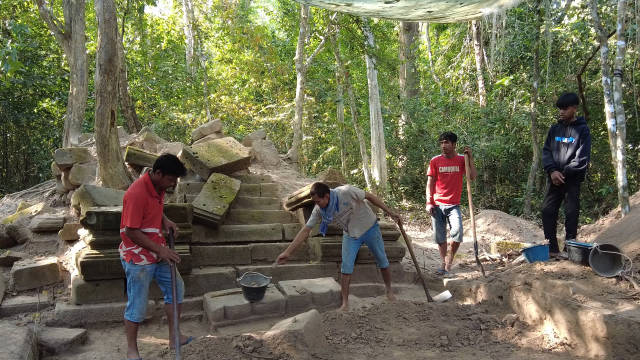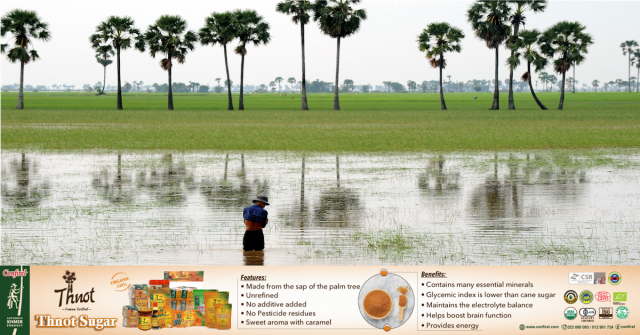Pagoda Terraces Shed Light on Post-Angkorian Time

- By Isa Rohany
- March 8, 2023 2:00 PM
SIEM REAP – An archaeological site 200 meters east of the popular Bayon temple in Siem Reap province came into focus when an excavation revealed the structural foundation of an ancient pagoda.
This research on Angkorian pagodas is being conducted by the archaeology centre of the University of Toronto in Canada and the APSARA National Authority. It primarily focuses on studying the terraces, generally made from laterite stones, of ancient pagodas (vihara) and other related structures to understand more about the evolution of Buddhism in this area during the late Angkorian era.
_1678253347.png)
Andrew Harris, the Angkor Vihara project director, said this is the third foundation excavation project and is expected to reveal the age, the function of the structure and the relationship between the vihara and the community of the people.
After about a month of earth work up to Feb. 7, the excavated soil exposed remnants of roof tiles which offer proof that there once stood a wooden structure there.
_1678253430.png)
Khmer pottery, even after the Angkorian period (16th - 17th century) alongside Chinese pottery can also be seen near the foundation.
As a side note, some local practices generally put the cremated bones of the deceased into clay pots and buried them inside or alongside monasteries. Furthermore, experts found traces of water flow from a nearby pond to the front of the vihara.
Although the city of Angkor was thought to be largely abandoned somewhere around the 14th century, more studies have suggested a growing amount of information on the conversion of religion and the construction of monasteries based on Buddhism since the end of the 14th century, especially during the 16th century.
These new findings established by national and international experts may shed new light on parts of the history which explains that the monasteries in the Angkor city were renovated when King Ang Chan returned to this city to look after other sacred locations in and around the Angkor Wat temple.
_1678253509.png)
Some of his other works were the construction of large Buddha statues on top of the Bakheng mountain temple, the Baphuon temple and monasteries around the Bayon temple.
Throughout the previous studies, an assumption was made that, within the enclosed wall of the Angkor Thom city (a compound enclosing the Bayon temple), 62 to 72 vihara foundations are believed to exist.
_1678253564.png)
Studies of the vihara foundations are still limited. The excavation is considered a new step in further understanding the life of people during the end of the Angkorian era.
Written in Khmer for ThmeyThmey News, this article was translated into English by Ky Chamna for Cambodianess News.















